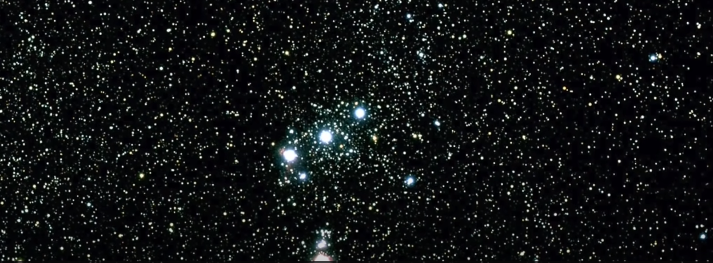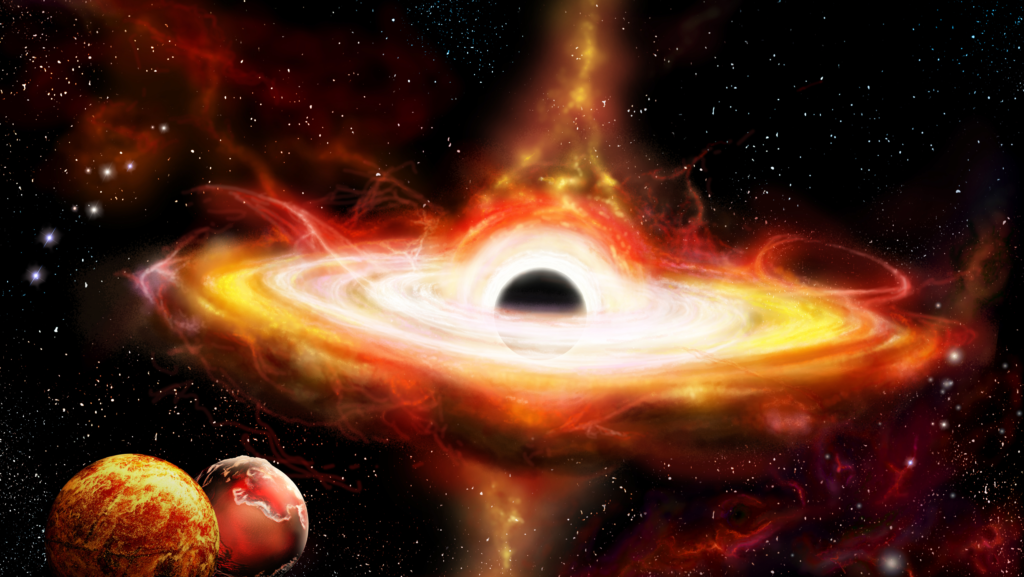There is a galaxy about 375 million light-years away from Earth and in its center is a supermassive black hole. A star passed very close to the supermassive black hole and due to the gravity of the supermassive black hole, the star was eaten a little bit.

We know that black holes exist.
Some black holes are about the same mass as our Sun and some, which astronomers call intermediate mass black holes, are 1000 times to 10000 times the mass of our Sun.
Black holes are found in the center of the galaxy called supermassive black holes. Their mass is a million or billion times greater than our sun.
Rather, at the center of our own Milky Way galaxy is a black hole with a mass 4 billion times that of the Sun.
The largest black hole known to astronomers so far has a mass 17 billion times that of the Sun.
NASA also created a computer simulation of what light would look like if it passed through a black hole (it would look like a hat).
The Destruction of Star by Supermassive Black Hole
There is a galaxy 375 million light years away, a star passed through the middle of that galaxy but there was a black hole in the middle of that galaxy. When that star passed near the supermassive black hole, at that time the gravity of the galaxy was high, meaning tidal force.

Tidal Force: This means that on one side of the star which was closer to the black hole, the gravity on that star was more and on the other side it was less, due to which the star became Tripe.

When that star broke up, it became very bright in that disruption event. It became so bright that it was as bright as all the stars in our galaxy. This light also appeared regularly in the sky for some time.
This object was first detected in January 2019. All Sky Automated Survey For Supernova This is a project covering the entire sky to search for supernova.
The All Sky Automated Survey for Supernova detected the star as it immediately brightened from the galaxy.
There is another telescope in space called the Transit Exoplanets Survey Satellite or TESS. It is actually exploring the planet. It looks at each star and checks its behavior to see if there is any dot in the light coming from in front of that star, if there is, it will be a planet. But what was coincidental was that it was looking on the same side where the All Sky Automated Survey for Supernova detected that light.
It turns out that the TESS Telescope accidentally recorded this event, the disruption of the star. With the help of the TESS Telescope, we saw how light from that star reached Peek. From which we know what will happen if a star has to pass through the supermassive black hole in the middle of the galaxy. Then the star was pulled by the supermassive black hole.

This is an image taken from a computer simulation. When this star passed through the middle of the galaxy, when the supermassive black hole pulled the star, the material of that star went towards the black hole, then some of the material became a tidal tale, and it moved outward, it went into the orbit of the black hole. I will not come. And the other material will form a disk around the black hole and then that material will go inside the black hole. This type of event is called Tidal Disruption Event.
This type of Tidal Disruption Event occurs every million years in every galaxy. If you talk about every galaxy, you can see one Tidal Disruption Event every day. So far, astronomers have discovered several hundred Tidal Disruption Events.
This event happened 375 million years ago, which means that humans were not present here at that time. And 375 million years ago dinosaurs didn’t even exist. At that time this object happened in this galaxy and its light was detected in January 2019. After doing a lot of research, it was found that this star ended 370 million years ago due to a supermassive black hole.

